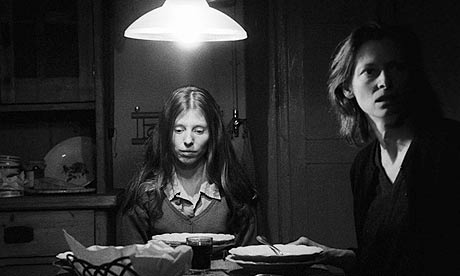
Inspired by Béla Tarr, whose The Man From London finally arrives in cinemas this week, I've been pondering the long take of late, and finding that the conventional wisdom on this topic boils down to, or rather extends no further than, about five movies; let's say, Touch Of Evil, The Player, Boogie Nights, GoodFellas and Swingers.
However, given that the lengthy, complicated opening shot in Robert Altman's The Player is a snarkily self-conscious homage to the lengthy, complicated opening shot of Touch of Evil, and that the long restaurant sequence in Swingers is a reverent spoof of the deservedly famous Copacabana tracking shot in GoodFellas, this narrows the debate down to about three movies.
To me, this is not enough, considering the rich and varied history of the camera. And no matter how much we admire these movies, it's worth remembering that they were all made after - and all were made far simpler to achieve by - the invention of the Steadicam. If you rewind back into cinema history, there was once a time when the capturing of all such shots was preceded by days of work for the studio carpenters, laying miles of track for the camera to glide along.
The Steadicam may have been used to exhilarating effect by directors like Stanley Kubrick, Alan Clarke and Joe Wright, but when I need my long-take jollies, I seek out the Hungarian Béla Tarr. His takes - glum, sardonic and aggressive at the same time - demand that viewers completely adjust their sense of screen time. Try shot one of his seven-hour 1994 masterpiece Sátántangó: nine minutes of cows coming out of a barn (no, really, bear with me). Once you get used to mining every inch of the screen for information - and stop wondering how he got those two cows to shag on demand - you can't tear your eyes away.
This sets you up nicely for shot two, a favourite of Tarr buffs: two men, their backs to the camera, walking down a narrow road, knee-deep in waves of garbage, propelled by almost comically heavy winds. Damnation (1988) and Werckmeister Harmonies (2000) are also powered by gratifyingly complicated and unsettling long takes.
Tarr drinks from the same creative well as his fellow Hungarian Miklós Jancsó - whose Beloved Electra (1974) contains 12 shots, filled with circuses, entire armies and barely controlled chaos, in 70 minutes - and the Greek Theo Angelopoulos, whose The Travelling Players was long-shot state of the art in 1975, and remains transcendent today. Jancsó alone makes me yearn for the heady days of postwar Soviet film-making, when you could call up the entire national military and make them march and ride back and forth across the vast Hungarian plain all the livelong day.
The demands these shots place on a film-maker call upon long-dead traditions of directing as generalship, as mania, as a ceaseless searching for stylistic ecstasy. Next to them, the Dunkirk sequence in Atonement seems like something out of a teenage boys' dick-measuring contest.

